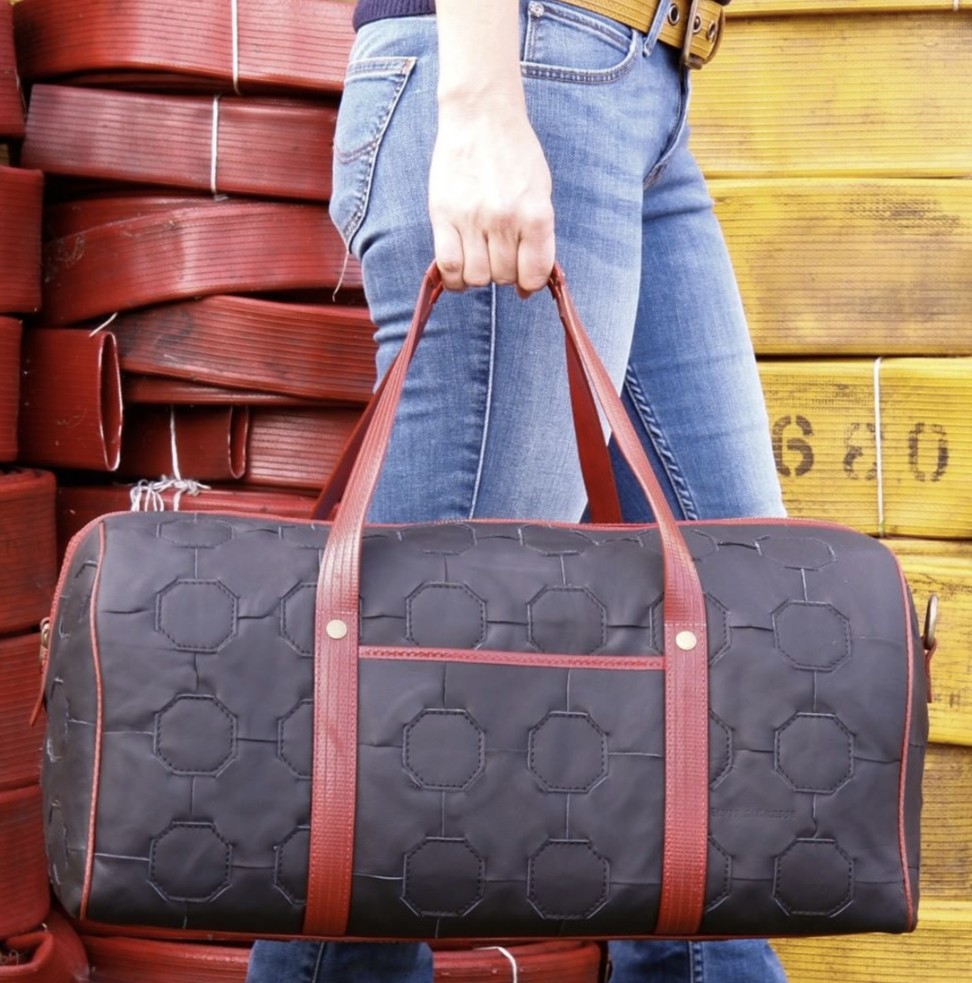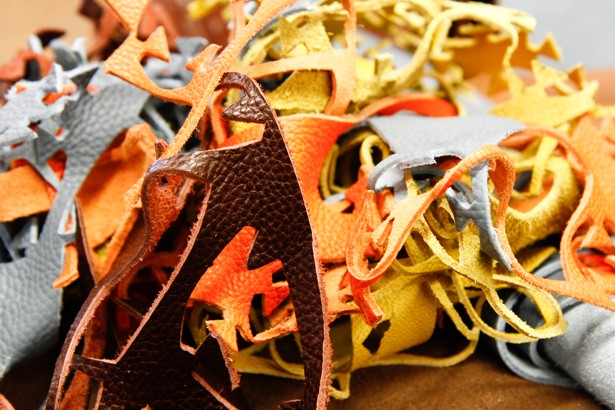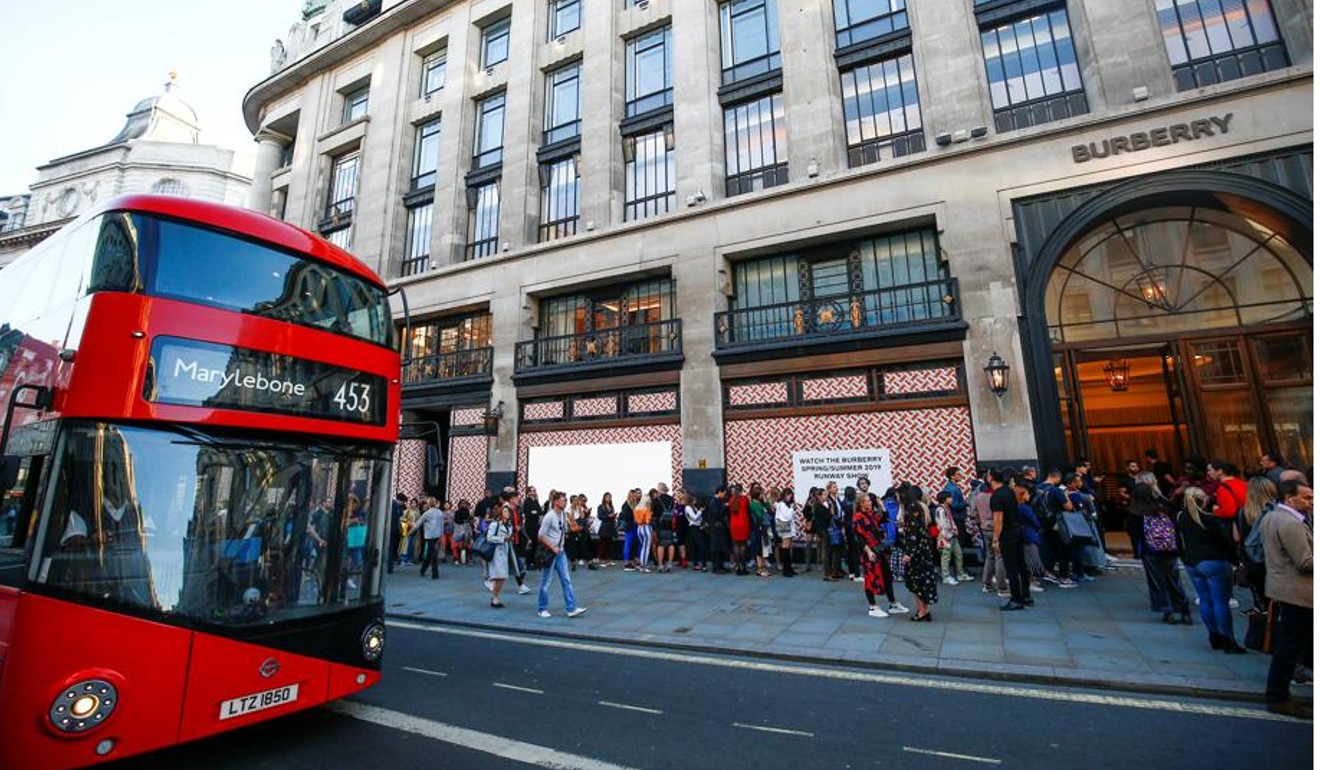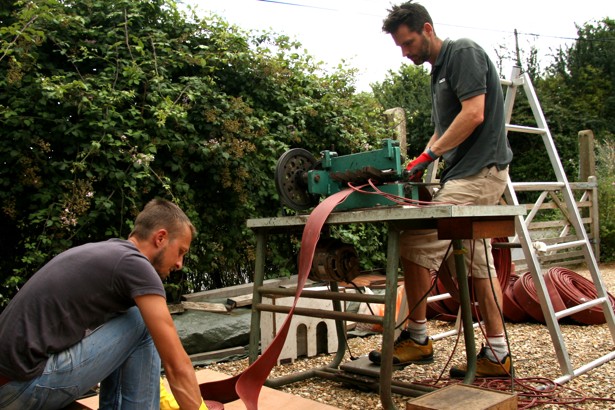
Where Burberry waste goes now British fashion brand isn’t burning clothes any more
Elvis and Kresse, a UK-based sustainable luxury fashion brand, is helping Burberry reach its environmental responsibility goals by creating accessories and homewares from its leather offcuts
Design features aside, the totes and clutches from Elvis and Kresse look like any other classic, utilitarian bags. But their story could not be more different.
Each handbag is made from upcycled materials sourced from items as diverse as fire hosepipes, printing blankets and parachute panels. In the past year, the list has also included unused leather from British luxury fashion house Burberry.
Burberry under fire for burning unsold clothes but everyone does it
Burberry declared on September 6 that it would no longer be destroying unused goods, effective immediately. The move comes just weeks after the company set off a firestorm among investors and environmental groups after announcing it destroyed US$37 million worth of unused merchandise last year.
Burberry’s commitment is part of a five-year “responsibility agenda” that also includes a promise to no longer use real fur in its collections and phase out collections that already include real fur.
“Modern luxury means being socially and environmentally responsible,” says Marco Gobbetti, Burberry’s CEO. “This belief is core to us at Burberry and key to our long-term success. We are committed to applying the same creativity to all parts of Burberry as we do to our products.”

Clothing waste and environmental responsibility have been a major point of debate in recent years. According to the Global Fashion Agenda forum and the Boston Consulting Group, around 92 million tons of textile waste is created by the fashion industry every year. In China alone, pre- and post-consumer textile waste amounts to an estimated 26 million tonnes, according to a 2013 report by the China National Garment Association.

Burberry’s agenda to “positively impact one million people” and become carbon neutral started last year. It has already led to two positive outcomes: more than one-fifth of its cotton is procured through the Better Cotton Initiative, a charity that aims to improve cotton farming practices in 21 countries, and it is exploring the production of new sustainable materials through the Burberry Material Futures Research Group established at London’s Royal College of Art.

The Burberry Foundation has also committed to working with London-based Elvis and Kresse to transform at least 120 tonnes of leather offcuts into accessories and homewares over the next five years. Half of the profits from these upcycled products will be donated to charities focused on renewable energy, such as Barefoot College, a social work and research centre that supports education for female solar engineers.

“When you are rescuing materials, you need to always be ready to act quickly,” Wesling says. “You need to have excess storage capacity, and you need to apply your creativity to the materials at hand, which are constantly changing and never guaranteed.”

The company’s first undertaking was to save decommissioned red and yellow fire hosepipes from the London Fire Brigade from landfill. It has so far rescued 170 tonnes of material, working the hosepipes into belts, wallets, totes, duffels and messenger bags for men and women.
“It seemed insane at the time, but by 2010 we had done it,” Kresse says. “The leather challenge we are facing now is 80,000 times larger.”

In finding a use for small leather scraps, the company had to get a little more creative. It devised a system that transformed the offcuts into small, Lego-like pieces that could be woven together to make larger panels for things like cross body bags and cosmetic cases. Now it hosts workshops to teach customers how to weave and customise their own upcycled bags, something that Kresse says also reinforces sustainable fashion because it “enhances the longevity of an item exponentially”.

Kresse says consumers have become increasingly aware of how fashion affects the environment in the past few years. “Customers are changing. We used to have to explain why we were different and now we don’t. Now we just have to work on reaching a larger audience,” she says.
Chinese consumers are also increasingly understanding the benefits of sustainable consumption. A 2016 survey by the China Chain Store and Franchise Association of nearly 10,000 consumers in 10 Chinese cities revealed about 70 per cent of respondents felt that sustainable consumption improved their life in some way, according to a report published last year by the China Daily.

While Elvis and Kresse does not have a presence in China yet, Kresse confirms it has Chinese customers (the company ships globally). She said it would be staging a pop-up in Hong Kong at the Mahka clothing store in Sheung Wan in collaboration with Hong Kong-based fashion platform TWYG on October 20 and 21.
Hong Kong duo claim to have made world’s ‘most sustainable shirt’
Burberry fans now have a channel to support the company’s sustainability efforts, one that is less focused on trends in the traditional sense. “We don’t make products for ‘seasons,’” Kresse says. “We want these pieces to be with our customers for a long second life.”

